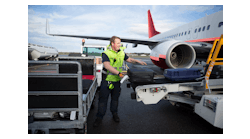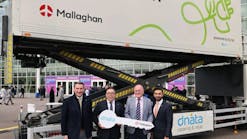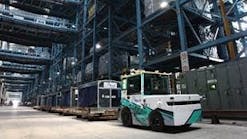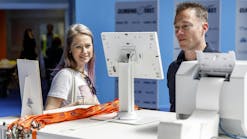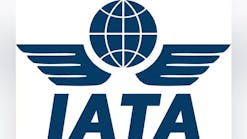Transforming Baggage Handling Operations with Human-Centric Technology
As airports reach the summer holiday peak, the perennial headache of handling significantly increased volumes of baggage sets in once again. According to the annual Air Travel Consumer Report released by the Department of Transportation, in 2023, roughly 2.7 million bags were either lost, damaged or delayed on domestic flights within the US.
To cut down on costly compensation and avoid the frustration of dissatisfied holidaymakers, airlines are increasingly reaching for advanced technology solutions that deliver greater automation and accuracy – and it's paying off. Between 2007 and 2019, airport digitalization projects led to a 70% reduction in mishandled baggage. But while airlines continue to be overwhelmed during the busy holiday seasons, the airport staff are bearing the brunt of the problem.
Various technology solutions have emerged as key remedies to modern airport chaos. These technologies can enhance baggage handling efficiency and processing accuracy and significantly reduce the mental and physical strain on airport staff. So, how can airports ensure that their workers and customers get the most out of the automation revolution?
Why Automation Solutions Are Not One Size Fits All for Airports and Staff
Fully automated solutions are only worth implementing if they can be tailored to meet the airport’s specific needs. While automated technology has been driving efficiency in larger airports for over 50 years, smaller airports often don’t have the footfall or funds to implement extensive baggage systems. So, instead, they opt for more agile, affordable solutions that still produce a quick return on investment. For instance, some airports have achieved notable reductions in luggage losses and waiting times, alongside improved customer and staff satisfaction, through the adoption of wearable scanning technology.
The unique operational dynamics of each airport necessitate customized approaches to technology integration. Large airports handle immense volumes of baggage, especially over busy holiday periods, and therefore require large-scale systems capable of managing complex logistics efficiently and accurately. In contrast, smaller airports are more likely to prioritize flexibility and cost-effectiveness, often benefiting from modular and scalable automation solutions.
The Human Touch: A Case for Human-Machine Collaboration
Then, there’s the human element of technology adoption. As its workers on the ground who handle this technology daily, IT decision-makers must consider the varying levels of experience and training staff have with automation technology. Tailoring solutions to their capabilities and needs ensures a smoother integration, and workers buy into the implemented changes.
Contrary to the increasingly frequent and dystopian projections of robots displacing human workers, airport staff remain central to tech adoption, like many sectors. This is because human reasoning and adaptability are irreplaceable in situations that require problem-solving or managing deviations from normal baggage-handling processes, such as handling oversized or awkwardly shaped baggage.
Balancing the relationship between humans and technology is crucial. If leaders don’t consider their workers when introducing technology or fail to provide adequate training, the technology won’t integrate effectively into existing workflows. Automation is not a silver bullet; it requires human insight and the careful consideration of feedback from staff in order to be truly impactful.
Creating a Safer, Faster Workforce with Ergonomic Technology
Ensuring that workers see technology solutions as assets rather than burdens is essential, but this can only be achieved by listening to the needs of airport staff. Wearable scanners have emerged as a solution to enhance the safety and comfort of workers, helping to build a more productive and satisfied workforce. The ergonomic, hand-free design of these devices allows workers to perform their tasks comfortably and more efficiently by removing the need to pick up and put down scanners.
What may seem like minuscule time savings in a single scan, adds up over time. When customers are waiting, and hundreds of bags need scanning, those tiny margins can add up pretty fast.
Additionally, when wearable technology and other hardware solutions can be connected to eligible software, leaders can identify trends and patterns to help them make informed decisions to improve layout and operations. For example, if scanning at one gate is considerably slower than at others, staff can further investigate to understand the nature of the issue.
Achieving Sky High Efficiency: Why Airports Are Choosing Scalable, Agile Technology Over Full Automation
While the enthusiasm surrounding automation continues to grow at a considerable rate throughout the logistics sector, not all IT decision-makers are rushing to fully automate baggage-handling processes. Instead, some are moving to partial automation, as it is seen to deliver quicker returns on investment than fully automated systems.
Recent research surveying 1,000 warehousing and logistics executives in the US and Europe found that 34% currently utilize semi or partially-automated systems. Looking ahead, 49% stated that they are prioritizing investment into semi-automated systems over the next five years. While almost half (46%) of IT decision-makers see automation as necessary over the next five years, for many decision-makers, the price tag attached to full automation just isn’t worth the risk at this point in time. Rather than jumping head-first into full automation, many industrial leaders are incorporating these technologies as part of a carefully considered, longer-term plan to achieve iterative efficiency and operational productivity improvements.
Agile and scalable technology solutions can be implemented more quickly and at a lower cost than full automation, offering immediate improvements in efficiency without the need for extensive system overhauls. This approach also allows airports to address specific pain points and gradually scale up automation as needed, rather than committing to a comprehensive and potentially disruptive transition.
Importantly, partial automation provides a balance between technological advancement and human oversight. It ensures that staff remain engaged and integral to the process, leveraging uniquely human capabilities to handle unexpected situations and complex tasks that fully automated systems tend to struggle with.
Ultimately, the strategic choice to prioritize agile technology over full automation reflects a nuanced understanding of both the limitations and strengths of automation. It highlights the importance of a phased, considered approach that maximizes efficiency while preserving the critical human element in airport operations.


